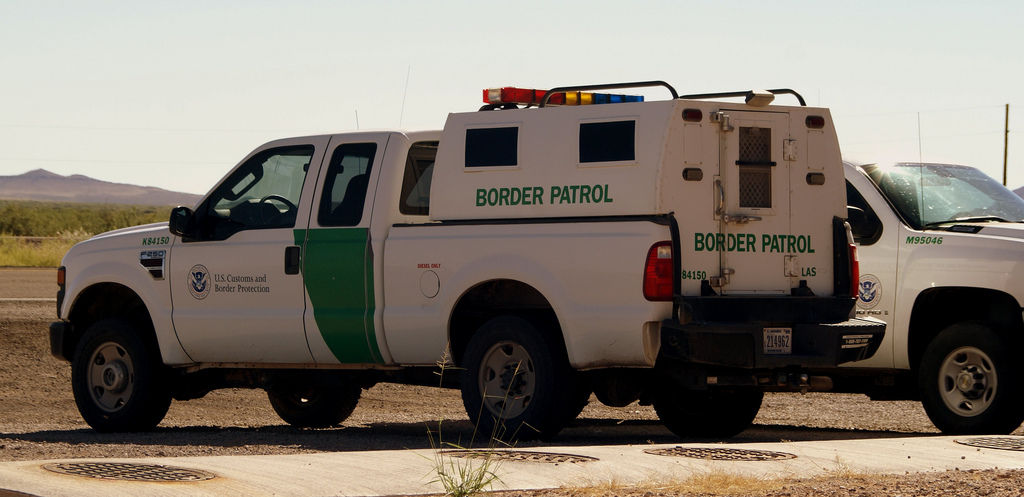In the year just ended, the U.S. Border Patrol and its parent agency, U.S. Customs and Border Protection (CBP), found themselves subject to an unprecedented level of public scrutiny. Crimes committed by Border Patrol agents—ranging from accepting bribes to shooting people in the back—no longer remained shrouded in secrecy. Rather, journalists, advocates, and investigators began to examine these cases in detail. As a result, the agency is facing demands for greater transparency and accountability in the way it operates, particularly in the way it deals with wrongdoing within its own ranks. The key unanswered question, however, is whether or not the Obama administration and Congress have the political will needed to fundamentally reform the way the Border Patrol functions and whether they will discontinue their practice of blindly throwing billions of tax dollars at the agency regardless of the outcomes.
The daunting challenges which face the Border Patrol in the new year are exemplified by a comprehensive story in Politico titled “The Green Monster”—a reference to the dark green uniforms worn by Border Patrol agents. As the story notes, some of the Border Patrol’s woes stem from the accelerated growth spurt it was compelled to undergo after 9/11. The agency suddenly found itself on the frontlines of homeland defense and was tasked for the first time with ultimately “securing” the entire U.S.-Mexico border. Congress pumped in massive amounts of new funding and instructed the agency to hire thousands of new agents in a very short time, which meant that many new recruits were not thoroughly screened or trained.
The result, as Politico explains, was that a “massive agency—freshly militarized by billions of dollars of weapons and technology and thousands of poorly vetted gun-carrying personnel hired in the panicky years after 9/11—was left adrift as violence and corruption in its ranks rose dramatically.” This is evidenced by the fact that “between 2005 and 2012, nearly one CBP officer was arrested for misconduct every single day.” Moreover, CBP uncovered “dozens of cases of criminal organizations like Mexican cartels and street gangs such as MS-13 infiltrating its ranks with new hires.”
A February 2013 report from the Police Executive Research Forum (PERF), which was requested by CBP but not publically released until May 2014, reviewed 67 CBP case files, as well as the agency’s use-of-force policies. In PERF’s estimation, the “case reviews raise a number of concerns, especially with regard to shots fired at vehicles and shots fired at subjects throwing rocks and other objects at agents.” Similarly, James F. Tomsheck, the former assistant commissioner for internal affairs at CBP, alleged in August 2014 that CBP officers (including Border Patrol agents) have covered up fatal shootings, leaked sensitive information, and accepted bribes from drug traffickers, among other offenses. According to Tomsheck, at least a quarter of the 28 cases since 2010 in which people have died during encounters with CBP officers are “highly suspect.” Moreover, Border Patrol officials have attempted to distort and cover up the facts of these cases in order to make them look like “good shoots.” He also said CBP has the “self-identity of a paramilitary border security force and not that of a law enforcement organization.”
And a 2013 investigation by the Arizona Republic found that “since 2005, on-duty Border Patrol agents and Customs and Border Protection officers have killed at least 42 people, including at least 13 Americans.” According to journalists Bob Ortega and Rob O’Dell, the shootings “vary from strongly justifiable to highly questionable,” and in none of the cases “is any agent or officer publicly known to have faced consequences.”
The tendency of the CBP in general and the Border Patrol in particular to bury allegations of abuse rather than respond to them is apparent in a May 2014 report from the American Immigration Council. The report examined 809 complaints of physical, sexual and verbal abuse lodged against Border Patrol agents, obtained through the Freedom of Information Act and found that 97 percent of cases in which a formal decision was issued resulted in “no action taken.”
As a new year commences, it remains to be seen if substantive change is on the horizon for CBP and the Border Patrol. President Obama has asked Congress to pass “a bill like the bipartisan Senate bill” (S. 744), which “continues to strengthen border security by adding 20,000 more Border Patrol agents.” However, if the recent past is any indication, this would be a recipe for disaster. The president and Congress must first rein in over-zealous recruitment practices, inadequate vetting, and poor training of new agents before there is any more discussion of increasing the size of an agency that has already grown too fast and with such devastating consequences.
Photo by Pablo Manriquez.
FILED UNDER: border patrol, featured, immigration reform, James Tomscheck


